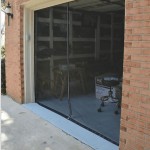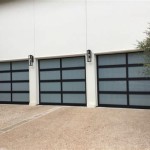Maximizing Space With A Canoe Hoist For Your Garage Door Opener
Garages often serve as more than just parking spaces for vehicles. They become storage hubs, workshops, and hobby areas. As such, efficient space management is crucial. One common culprit consuming valuable garage real estate is infrequently used recreational equipment, such as canoes. A canoe hoist, particularly one designed to coexist with a garage door opener, offers a practical solution for reclaiming overhead space and improving overall garage organization.
This article will provide an in-depth exploration of canoe hoists, focusing on their integration with garage door openers. It will discuss the benefits, types, installation considerations, and safety precautions associated with these systems, empowering readers to make informed decisions regarding their garage storage needs.
Understanding the Benefits of a Canoe Hoist
The primary advantage of a canoe hoist is the conservation of floor space. By suspending the canoe from the garage ceiling, the hoist eliminates the need for it to occupy valuable ground area. This is especially beneficial in smaller garages or those already crowded with tools, equipment, and other stored items. The liberated space can then be allocated for more frequently used items, workbenches, or simply a more open and navigable environment.
Another significant benefit pertains to accessibility. Storing a canoe on the floor can make it difficult to maneuver, especially if it's positioned behind other items or against a wall. A hoist allows for easy raising and lowering of the canoe, making it readily available for use. This eliminates the hassle associated with dragging or awkwardly lifting the canoe, reducing the risk of injury and equipment damage. The hoist also provides a safe and secure storage method, preventing accidental tipping or damage from being bumped into.
Furthermore, a canoe hoist protects the canoe itself. Storing a canoe directly on the floor can expose it to moisture, dirt, and pests. These elements can contribute to the deterioration of the canoe's materials, shortening its lifespan. By suspending the canoe from the ceiling, the hoist elevates it away from these potential hazards, helping to preserve its condition and prolong its usability. The elevated position also reduces the likelihood of accidental damage from vehicles or other objects within the garage.
Exploring Different Types of Canoe Hoists
Canoe hoists come in various designs, each with its own advantages and disadvantages. Understanding these differences is essential for selecting the right hoist for a specific garage and canoe.
Manual hoists, as the name suggests, rely on human power to lift and lower the canoe. These typically involve a rope and pulley system, requiring the user to pull on the rope to raise the canoe and slowly release it to lower it. Manual hoists are generally less expensive than motorized options, but they require more physical effort. They are well-suited for lighter canoes or individuals with sufficient upper body strength. Safety features, such as rope locking mechanisms, are crucial for preventing accidental slippage.
Electric hoists utilize an electric motor to power the lifting and lowering mechanism. These hoists offer greater convenience and ease of use, particularly for heavier canoes. They often come with remote controls, allowing the user to operate the hoist from a distance and precisely position the canoe. Electric hoists are more expensive than manual options, but they can significantly reduce the physical strain involved in storing and retrieving a canoe. Considerations for electric hoists include the availability of a power outlet near the installation location and the weight capacity of the hoist motor.
Rope and pulley systems are a fundamental component of most canoe hoists, regardless of whether they are manual or electric. The quality of the rope and pulleys significantly impacts the hoist's performance and safety. High-quality ropes are essential for ensuring sufficient load capacity and resistance to wear and tear. Pulleys should be smooth and durable, allowing for effortless movement of the rope. The number of pulleys in the system affects the mechanical advantage, influencing the amount of effort required to lift the canoe. Some systems utilize multiple pulleys to distribute the weight more evenly and reduce the strain on individual components.
Specific to the garage door opener compatibility, there are hoists designed to work seamlessly with existing garage door opener systems. These might include features that allow the hoist to be powered from the same electrical circuit or that integrate with the garage door opener's safety sensors to prevent the door from operating while the canoe is lowered. It's important to verify compatibility before purchasing such a system.
Installation Considerations and Safety Precautions
Proper installation is paramount for ensuring the safe and reliable operation of a canoe hoist. It is highly recommended that individuals unfamiliar with structural mechanics or electrical wiring consult with a qualified professional to oversee or perform the installation. This helps prevent potential hazards and ensures compliance with local building codes.
Before installing a canoe hoist, it is vital to assess the structural integrity of the garage ceiling. The ceiling must be strong enough to support the weight of the canoe and the hoist system itself. This typically involves confirming that the joists are adequately sized and spaced to bear the load. If there is any doubt about the ceiling's capacity, consulting with a structural engineer is advisable. Reinforcing the ceiling with additional bracing may be necessary to ensure sufficient support. The location of the hoist should also be chosen carefully, avoiding areas with pre-existing wiring, plumbing, or ductwork.
For electric hoists, proper electrical wiring is essential. The hoist should be connected to a dedicated circuit with appropriate overcurrent protection. Grounding the hoist is crucial for preventing electrical shock. If the garage lacks a suitable electrical outlet, a qualified electrician should install one. All electrical connections should be made in accordance with local electrical codes. Using a ground fault circuit interrupter (GFCI) outlet provides an added layer of safety.
Once the hoist is installed, it is imperative to conduct thorough testing before using it to store the canoe. This involves raising and lowering the hoist several times, checking for any signs of instability or malfunction. Pay close attention to the smooth operation of the lifting mechanism and ensure that the locking mechanisms are functioning correctly. Inspect the ropes, pulleys, and hardware for any signs of wear or damage. If any issues are detected, they should be addressed immediately before using the hoist.
Safety precautions should be emphasized in all aspects of canoe hoist operation. Never exceed the hoist's rated weight capacity. Distribute the canoe's weight evenly when loading it onto the hoist. Use appropriate lifting straps or slings to secure the canoe to the hoist. Never stand directly underneath the canoe while it is being raised or lowered. Ensure that the area around the hoist is clear of obstructions. Regularly inspect the hoist for any signs of wear or damage. Replace worn or damaged parts promptly. Educate all users on the proper operation of the hoist and the importance of safety. Consider implementing a checklist to ensure that all safety procedures are followed each time the hoist is used. If integrating with a garage door opener, ensure compatibility and that safety features prevent the door from operating while the canoe is obstructing the doorway.
Choosing the right canoe hoist involves balancing cost, convenience, and safety. By carefully considering these factors and following the guidelines outlined in this article, individuals can effectively maximize garage space and enjoy the benefits of a well-organized and functional storage area. The integration with an existing garage door opener requires careful planning and compatibility checks to ensure a safe and user-friendly system.

A Bridge Crane Boat Lift Small Boats

3 Easy Ways To Hang A Kayak In Your Garage Wikihow

Out Of Sight Mind 22 Ceiling Storage Ideas For The Garage

Stalwart Kayak Hook 4 Pack 14 In Black Steel The Garage Storage Hooks Department At Com

Garage Gator Double Kayak 220 Lb Lift Kit Door Unlimited

Stalwart Kayak Hook 4 Pack 14 In Black Steel The Garage Storage Hooks Department At Com

Kayak Storage Heist Overhead Garage At Com

A Bridge Crane Boat Lift Small Boats

Stalwart Kayak Hook 4 Pack 14 In Black Steel The Garage Storage Hooks Department At Com

Overhead Garage Storage Archives Tailors
Related Posts








